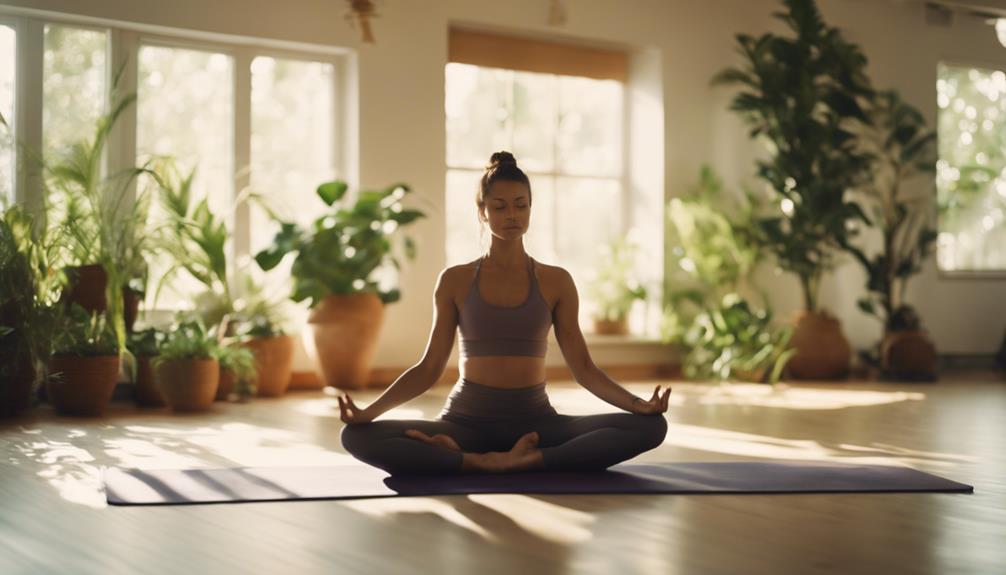What Is Chaturanga In Yoga

Chaturanga, often referred to as the “Four-Limbed Staff Pose,” is a fundamental asana in yoga that serves as a building block for many other poses. It is commonly incorporated into vinyasa flows and is essential for developing strength, stability, and balance. In this blog post, we will explore the intricacies of Chaturanga, its benefits, proper alignment, common mistakes, variations, and how to integrate it into your yoga practice.
Understanding Chaturanga: The Foundation of Strength
Chaturanga Dandasana, or Chaturanga, is derived from Sanskrit, where “Chatur” means four, “Anga” means limbs, and “Danda” means staff or rod. This pose involves supporting your body weight on your hands and the balls of your feet while keeping your elbows bent at a 90-degree angle. It resembles a low push-up position and is integral in transitioning between various asanas, particularly in sun salutations. Understanding Chaturanga is crucial for practitioners looking to deepen their practice and enhance their physical capabilities.
The Physical Benefits of Practicing Chaturanga
One of the primary benefits of Chaturanga is its ability to build core strength. Engaging your abdominal muscles while maintaining the pose helps to stabilize your core and enhances overall body strength. Additionally, Chaturanga strengthens the arms, shoulders, and back, offering a robust workout for these muscle groups. This pose also promotes proper alignment and posture, making it beneficial for those who spend long hours sitting. By incorporating Chaturanga into your routine, you can improve your muscular endurance and support your overall fitness goals.
Proper Alignment in Chaturanga: Key to Safety and Efficacy
To reap the full benefits of Chaturanga, proper alignment is essential. Start in a plank position with your shoulders stacked over your wrists. As you lower your body, keep your elbows close to your sides and bend them at a 90-degree angle. Your body should form a straight line from the head to the heels, avoiding sagging hips or raised buttocks. Engaging the core and maintaining a neutral neck position helps to protect your spine and prevent injury. Proper alignment not only enhances the effectiveness of the pose but also minimizes the risk of strain or injury.
Related Posts:
Common Mistakes to Avoid When Practicing Chaturanga
Many practitioners struggle with Chaturanga due to common misalignments and mistakes. One prevalent mistake is allowing the elbows to flare out to the sides, which can strain the shoulders. Another common error is sagging the hips or lifting the tailbone too high, which compromises the pose’s integrity. Additionally, some individuals may rush through the transition into Chaturanga, leading to improper form. Taking the time to focus on alignment and control can help you avoid these pitfalls and ensure a safe practice.
Chaturanga Variations: Modifications for Every Level
For those new to yoga or those looking to modify their practice, there are several variations of Chaturanga that can be beneficial. Beginners can practice knee Chaturanga, where the knees touch the ground, reducing the overall body weight. Alternatively, practicing Chaturanga against a wall can help build strength and confidence. For advanced practitioners, you can challenge yourself with one-legged Chaturanga, where one leg is lifted off the ground, increasing the intensity of the pose. These variations allow individuals of all levels to safely incorporate Chaturanga into their practice.
Integrating Chaturanga into Your Yoga Practice
Chaturanga is often included in vinyasa flows, sun salutations, and power yoga sequences. To effectively integrate this pose into your practice, focus on transitioning smoothly between poses. For example, after Downward Dog, you can flow into Chaturanga, using the strength developed in the previous pose. Practicing Chaturanga regularly will not only improve your strength but will also enhance your ability to transition between asanas seamlessly. Remember to listen to your body and adjust your practice as needed, ensuring you maintain proper form.
Chaturanga and Mindfulness: The Mental Aspect of Practice
While Chaturanga is primarily a physical pose, it also offers mental benefits. The focus required to maintain proper alignment and engage your muscles helps cultivate mindfulness and concentration. As you practice Chaturanga, try to connect your breath with your movement, creating a meditative state. This connection can enhance your overall yoga experience and contribute to a deeper sense of awareness and presence. Practicing mindfulness in Chaturanga can lead to improved mental clarity and reduced stress, making it a valuable addition to your routine.
Conclusion: Embrace Chaturanga as a Vital Yoga Practice
In conclusion, Chaturanga is an essential pose in yoga that offers numerous physical and mental benefits. Understanding its alignment, common mistakes, and variations will help you incorporate it effectively into your practice. Remember that Chaturanga is not just a physical challenge; it is also an opportunity to cultivate mindfulness and awareness. Whether you are a beginner or an experienced practitioner, embracing Chaturanga will enhance your yoga journey and improve your overall well-being. So, roll out your mat, take a deep breath, and confidently explore the transformative power of Chaturanga in your practice.
By understanding what Chaturanga is and its significance in yoga, you can elevate your practice and enjoy the multitude of benefits it offers. Happy practicing!